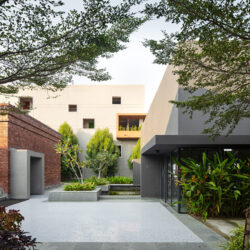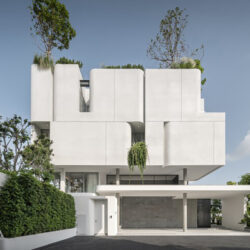Versatility Beyond the Outdoors
If you’ve ever witnessed scenes from an old western or a Civil War movie, you might be familiar with the concept of wall tents. Traditionally associated with camping and hunting, these tents have evolved to become more than just a shelter for outdoor enthusiasts. Today, wall tents find applications as versatile spaces that go beyond camping grounds.
Wall Tents for Extended Shelter
While wall tents are commonly utilized for hunting camps due to their ability to withstand prolonged use and offer enhanced protection from the elements, their potential extends far beyond the wilderness. The adaptable nature of wall tents makes them suitable for various unconventional purposes, such as serving as an Accessory Dwelling Unit (ADU), transforming into a home office, makeshift art studio, a secluded getaway, guest room, yoga and meditation space, or even a dedicated playroom for children.
A Cost-Effective Space Solution
For those seeking additional space without the financial commitment of constructing a home addition or a separate structure on their property, wall tents present a compelling compromise. The flexibility in setup allows for straightforward installations or imaginative configurations, exemplified by innovative projects like a three-tent home in California featuring multiple living spaces, an outdoor kitchen, and various decks.
Understanding the Wall Tent
A wall tent is essentially a canvas tent equipped with side walls and a roof. Positioned on a frame, typically constructed from wood or metal, it can rest on the ground or on a more permanent foundation like a wood platform or concrete slab. Guy wires provide stability, running diagonally from the tent to the ground and attaching to stakes. Additionally, a fly sheet can be added for extra rain protection.
Simple Setup Process
Wall tent kits simplify the setup process, often including a frame (made of aluminum or wood), poles, angle kits, base, and necessary tools. The canvas may be sold separately, with the frame purchased independently. With two people working together, assembling the tent involves placing the canvas over the ridgepole, adding side poles, and lifting the tent into position—a task achievable in about 30 minutes.
Elevating the Experience
For a more permanent feel, wall tents typically come with a floor kit, creating a protective layer between the tent interior and the ground. Alternatively, users can opt to construct a wood platform to elevate the tent or even develop a wood frame with side walls for added support and protection.
Explore Wall Tent Options
White Duck Alpha Wall Tent
The White Duck Alpha Wall Tent series offers various sizes, catering to individual needs. Ranging from 8 feet by 10 feet to 16 feet by 24 feet, these tents withstand harsh weather conditions and boast durability. Natural light streams through the windows, making them suitable for applications like yoga studios or spacious offices.
Denver Tent Colorado Wall Tent
The Denver Tent Colorado Wall Tent features a ridge pole opening with a screen, providing an indoor space with scenic outdoor views. This tent encourages an abundance of natural light, making it an ideal setting for incorporating plants and enjoying sunset views. While it doesn’t come with a frame, users can purchase couplers and conduit pipes to construct their own or explore online options for aluminum frames.
Sweetwater Bungalows Sonoma Bungalow Kit
The Sonoma Bungalow Kit from Sweetwater Bungalows presents a semi-permanent structure with a wood frame, enamel slider windows, and a storm door. Tailored for outdoor living, this wall tent allows for varying levels of complexity, offering a more expensive yet home-like construction option.
In conclusion, wall tents have transcended their camping roots to become versatile spaces, providing a cost-effective solution for additional living or working areas. With a range of options available, these tents offer a unique blend of functionality and flexibility, redefining the possibilities beyond traditional outdoor applications.



















